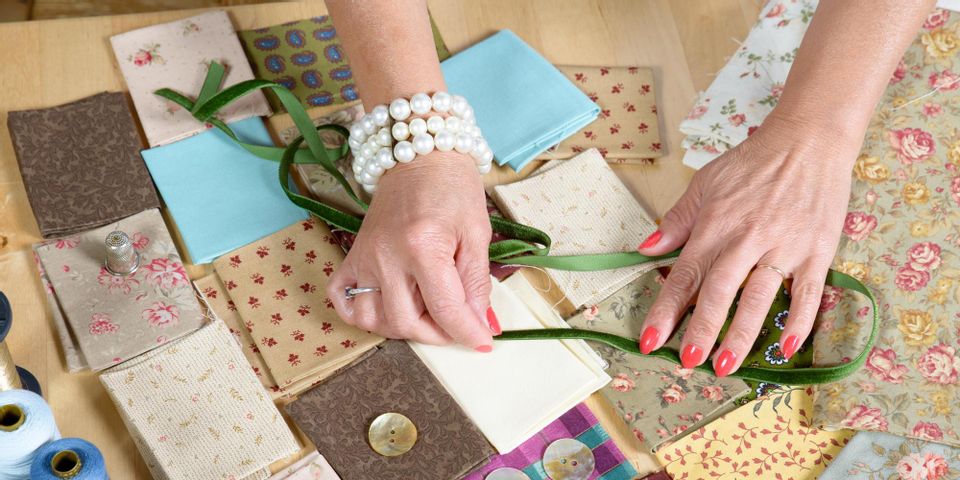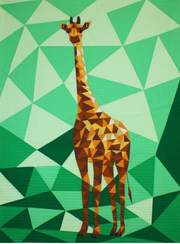
Quilts are loved for their unique looks, which mostly stem from the colors in their designs. Using color theory will help you create a piece with a harmonious look that pops. Start by choosing your colors, then finding the right way to mix shades and fabrics.
Types of Colors
Primary
The three primary colors are red, yellow, and blue. They are equally spaced out on the color wheel, and by combining these colors in different ways, you can create any color on the spectrum.
These three colors can be used together on quilts since they perfectly balance each other out. This balance is called the triadic color scheme.
Secondary
The three secondary colors are green, orange, and violet. They sit between the three primary colors on the wheel because they are made by evenly mixing red, yellow, and blue.
Green is a combination of blue and yellow, orange is a combination of yellow and red, and violet is a combination of blue and red. They can be used with the primary colors for a vibrant rainbow color scheme.
Neutral
Neutral colors are considered weak since they don’t draw attention. They are used as background colors, allowing other hues to pop in a design. These colors include different shades of gray, beige, and soft whites. Black can also be neutral if it’s used with vibrant colors that stand out in contrast.
Mixing Shades
Warm & Cool
 Warm colors are the hues between red and yellow on the color wheel. Cool colors range between purple, blue, and green.
Warm colors are the hues between red and yellow on the color wheel. Cool colors range between purple, blue, and green.
These hues easily complement each other when used together. Warm colors have a lot of energy and will jump out at you, while the cool shades fade to the background.
Light vs. Dark
Light and dark hues create a strong contrast, which allows you to focus more on shapes and fabrics, rather than colors. Create a more stark contrast by placing white directly next to black. Make it more subtle by including gradients of these tones.
Complementary
Complementary colors are situated across from each other on the color wheel. Shades like red and green or yellow and purple balance each other out.
If you are going to use this scheme, choose one dominant and one secondary color. Use the dominant color on most of the quilt and the complementary color sparingly throughout the design.
If you want to add more color, use a split complementary theme. Choose three colors directly next to each other on the wheel, and highlight the design with a complementary color from across the color wheel.
Once you have a design in mind, get your materials at Olive Juice Quilts in Onalaska, WI. This La Crosse County fabric store has everything you need to make your quilts, with an expansive inventory of fabrics, patterns, threads, and accessories. They also offer sewing machine repair services and quilting and sewing classes. Call (608) 782-3257 or visit them online for more information.
About the Business
Have a question? Ask the experts!
Send your question

